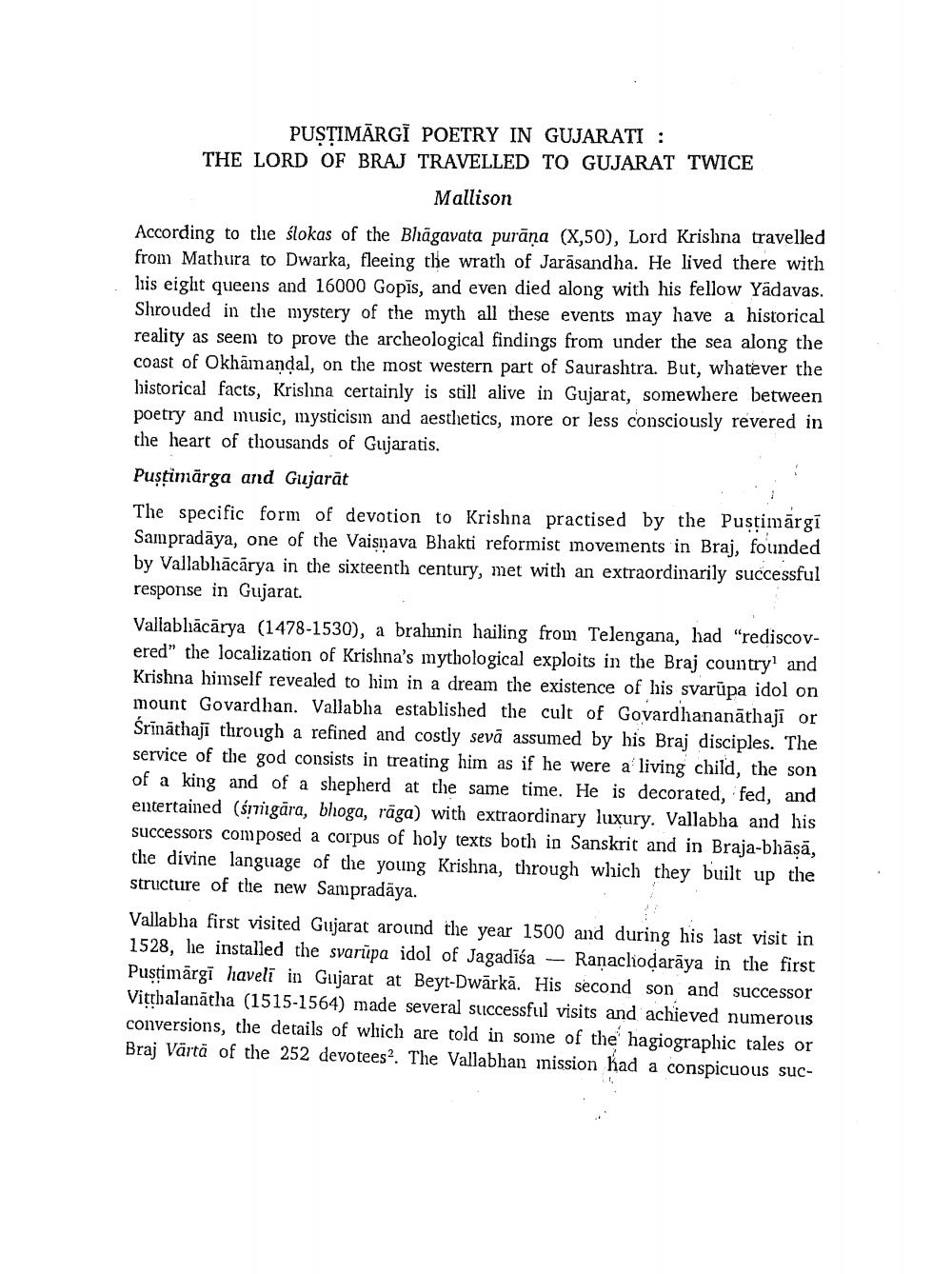________________
PUŞTIMĀRGI POETRY IN GUJARATI :
THE LORD OF BRAJ TRAVELLED TO GUJARAT TWICE
Mallison
According to the slokas of the Bhagavata purana (X,50), Lord Krishna travelled from Mathura to Dwarka, fleeing the wrath of Jarasandha. He lived there with his eight queens and 16000 Gopis, and even died along with his fellow Yadavas. Shrouded in the mystery of the myth all these events may have a historical reality as seem to prove the archeological findings from under the sea along the coast of Okhamandal, on the most western part of Saurashtra. But, whatever the historical facts, Krishna certainly is still alive in Gujarat, somewhere between poetry and music, mysticism and aesthetics, more or less consciously revered in the heart of thousands of Gujaratis.
Pustimärga and Gujarat
The specific form of devotion to Krishna practised by the Pustimärgi Sampradaya, one of the Vaisnava Bhakti reformist movements in Braj, founded by Vallabhācārya in the sixteenth century, met with an extraordinarily successful response in Gujarat.
Vallabhācārya (1478-1530), a brahmin hailing from Telengana, had "rediscovered" the localization of Krishna's mythological exploits in the Braj country' and Krishna himself revealed to him in a dream the existence of his svarupa idol on mount Govardhan. Vallabha established the cult of Govardhananathaji or Śrinathaji through a refined and costly seva assumed by his Braj disciples. The service of the god consists in treating him as if he were a living child, the son of a king and of a shepherd at the same time. He is decorated, fed, and entertained (rigāra, bhoga, räga) with extraordinary luxury. Vallabha and his successors composed a corpus of holy texts both in Sanskrit and in Braja-bhäsä, the divine language of the young Krishna, through which they built up the structure of the new Sampradaya.
Vallabha first visited Gujarat around the year 1500 and during his last visit in 1528, he installed the svarupa idol of Jagadisa Ranachioḍaraya in the first Pustimärgi haveli in Gujarat at Beyt-Dwarka. His second son and successor Vitthalanatha (1515-1564) made several successful visits and achieved numerous conversions, the details of which are told in some of the hagiographic tales or Braj Värta of the 252 devotees. The Vallabhan mission had a conspicuous suc




